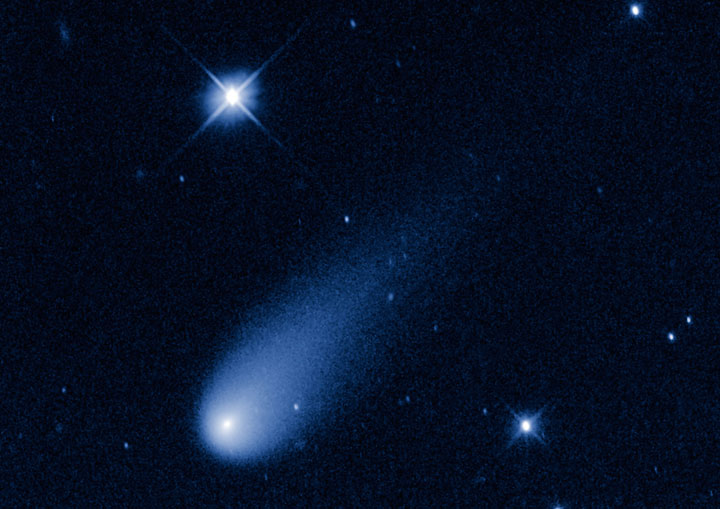TORONTO – Astronomers are eagerly anticipating Comet ISON, and Hubble has given them a sneak peek.

The Hubble Space Telescope captured several images of Comet ISON as it flew through space 649 million km from Earth at 77,000 km/h. The comet lies between the orbits of Mars and Jupiter.
The comet was discovered by Russian astronomers Vitali Nevski and Artyom Novichonok on Sept. 21, 2012 (its official name is C/2012 S1; ISON stands for the International Scientific Optical Network, named for a group of observatories which track objects in space).
Read David Levy: King of the comets

Get breaking National news
The comet — called a “sungrazer” due to how close it will pass when it orbits our star — will make its closest approach to the sun on Nov. 28, 2013. At that point it will be only 1.2 million km from the visible surface of the sun.
Although some are hoping this will be the “Comet of the Century,” there is uncertainty as to what kind of a show ISON will give us. Based on calculations, astronomers believe this is the first time the comet has come within our solar system. But because it will pass so close to the sun, ISON could be visible even during the day.
Comets are often referred to as “dirty snowballs” because they are made up largely of ice and debris left over from the creation of our solar system.
Tails from comets form when the the icy material transforms from a solid into a gas (called sublimation). The solar wind blows the gas away from the comet and the gas and dust reflect sunlight, brightening the comet.
ISON’s closest approach to Earth will be on Dec. 26, 2013, but only if it survives its encounter with the sun.






Comments